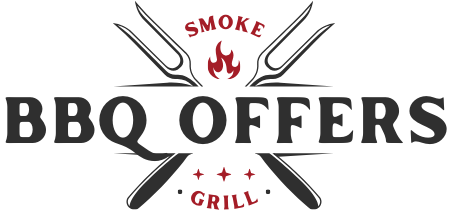Mastering the Art of Smoking Meat

Smoking meat is an age-old culinary technique that transforms ordinary cuts into extraordinary dishes, infusing them with rich flavors and tender textures. At its core, smoking involves cooking meat at low temperatures over a prolonged period, allowing the smoke from burning wood to permeate the meat. This method not only enhances the flavor but also helps preserve the meat, making it a popular choice for barbecue enthusiasts and home cooks alike.
The process can seem daunting at first, but with a little knowledge and practice, I have found that anyone can master the art of smoking meat. The beauty of smoking lies in its versatility. I can choose from a variety of meats, woods, and techniques to create unique flavor profiles that suit my palate.
Whether I’m smoking brisket, ribs, or even fish, each type of meat requires a different approach to achieve the best results. Understanding the basics of smoking meat means familiarizing myself with the equipment, the types of wood available, and the various cuts of meat that lend themselves well to this cooking method. As I delve deeper into this culinary adventure, I discover that patience and attention to detail are key components in creating mouthwatering smoked dishes.
Selecting the Right Wood for Smoking
Choosing the right wood for smoking is crucial to achieving the desired flavor in my meat. Different types of wood impart distinct flavors, and understanding these nuances has become an essential part of my smoking journey. For instance, hickory is known for its strong, bold flavor, making it ideal for red meats like beef and pork.
On the other hand, fruitwoods such as apple and cherry provide a milder, sweeter smoke that pairs beautifully with poultry and fish. As I experiment with various woods, I find that blending different types can create complex flavor profiles that elevate my dishes to new heights. In addition to flavor, I’ve learned that the moisture content of the wood plays a significant role in the smoking process.
Using seasoned wood that has been properly dried ensures a clean burn and prevents excessive creosote buildup, which can impart an unpleasant taste to my meat. I often find myself visiting local suppliers or farmers’ markets to source high-quality wood chips or chunks. The experience of selecting my wood has become an integral part of my smoking ritual, as I enjoy discovering new varieties and experimenting with their unique characteristics.
Choosing the Best Cuts of Meat for Smoking

When it comes to smoking meat, not all cuts are created equal. Some cuts are naturally more suited for low-and-slow cooking methods due to their fat content and connective tissue. For example, brisket is a favorite among pitmasters because its marbling breaks down during the long cooking process, resulting in tender, flavorful slices.
Similarly, pork shoulder is another excellent choice; its high fat content ensures that it remains juicy and succulent even after hours of smoking. As I explore different cuts, I’ve come to appreciate how each one brings its own unique qualities to the table. I also consider the size and thickness of the cuts when planning my smoking sessions.
Larger cuts like whole turkeys or pork butts require longer cooking times and careful temperature management to ensure they cook evenly throughout. Conversely, smaller cuts such as chicken thighs or ribs can be smoked more quickly, allowing me to enjoy delicious results in a shorter timeframe. By understanding the characteristics of various cuts and how they respond to smoking, I can make informed decisions that lead to consistently satisfying outcomes.
Mastering the Art of Temperature Control
| Temperature Control Technique | Benefits |
|---|---|
| Proper Equipment Calibration | Ensures accurate temperature readings |
| Understanding Heat Transfer | Helps in controlling temperature gradients |
| Monitoring and Adjusting | Allows for precise control of cooking processes |
| Using Thermometers and Probes | Ensures food safety and quality |
Temperature control is perhaps one of the most critical aspects of smoking meat. Maintaining a consistent temperature throughout the cooking process ensures that my meat cooks evenly and reaches the desired level of doneness without drying out. I’ve learned that different meats have different ideal smoking temperatures; for instance, brisket is typically smoked at around 225°F to 250°F, while poultry can be cooked at slightly higher temperatures.
Investing in a reliable meat thermometer has been a game-changer for me, allowing me to monitor internal temperatures accurately and make adjustments as needed. In addition to monitoring internal temperatures, I’ve discovered that managing the temperature of my smoker is equally important. Whether I’m using a charcoal smoker or an electric one, I pay close attention to airflow and fuel levels to maintain a steady heat source.
I often find myself adjusting vents or adding more wood as needed to keep the temperature within the desired range. This hands-on approach has taught me patience and vigilance—qualities that are essential for achieving perfectly smoked meat.
Enhancing Flavor with Marinades and Rubs
While smoke adds depth and complexity to my meat, marinades and rubs can further enhance its flavor profile. I enjoy experimenting with various combinations of spices, herbs, and acidic ingredients like vinegar or citrus juice to create marinades that tenderize and infuse my meats with flavor. A good marinade not only adds taste but also helps break down tough fibers in certain cuts, making them more enjoyable to eat.
I often marinate my meats overnight to allow the flavors to penetrate deeply. Rubs are another fantastic way to elevate my smoked dishes. A well-balanced rub can create a flavorful crust on the outside of my meat while complementing the smoky flavors from the wood.
I’ve learned that a combination of sweet, savory, and spicy elements works wonders in creating a balanced rub that enhances rather than overwhelms the natural flavors of the meat. The process of applying rubs has become almost meditative for me; it’s a chance to connect with my ingredients and set the stage for a delicious meal.
Tips for Achieving Perfect Smoke Ring and Bark

One of the hallmarks of expertly smoked meat is the coveted smoke ring—a pink layer just beneath the surface that indicates proper smoking technique. Achieving this beautiful smoke ring requires a combination of factors, including the type of meat used, the temperature at which it’s cooked, and even the type of wood chosen for smoking. I’ve found that using fresh wood chips and maintaining a consistent temperature helps create an ideal environment for developing this signature feature.
Bark is another sought-after characteristic in smoked meats; it refers to the flavorful crust that forms on the exterior during cooking. To achieve perfect bark, I focus on creating a good balance between moisture and heat. Applying a rub before smoking helps form a crust as it caramelizes during cooking.
Additionally, I avoid wrapping my meat too early in the process; allowing it to breathe in those initial hours helps develop a robust bark that adds texture and flavor to each bite.
Smoking Meat Safely: Food Safety Guidelines
As much as I enjoy smoking meat, I understand that food safety is paramount in ensuring a delicious and safe dining experience. One of the first rules I adhere to is keeping raw meat separate from other foods to prevent cross-contamination. I always use separate cutting boards and utensils when handling raw meats versus cooked items.
Additionally, I make sure to wash my hands thoroughly before and after handling any food products. Temperature control also plays a vital role in food safety during smoking sessions. I ensure that my meats reach safe internal temperatures—165°F for poultry and at least 145°F for pork—before serving them up.
Using a reliable meat thermometer allows me to monitor these temperatures accurately throughout the cooking process. By following these guidelines diligently, I can enjoy my smoked creations without worrying about foodborne illnesses.
Exploring Different Smoking Techniques and Equipment
The world of smoking meat is vast and varied, offering numerous techniques and equipment options for enthusiasts like myself. From traditional offset smokers to modern electric models, each type has its own advantages and challenges. I’ve experimented with different setups over time; while charcoal smokers provide an authentic flavor profile, pellet smokers offer convenience and ease of use for those busy days when time is limited.
In addition to equipment choices, I’ve also explored various smoking techniques such as cold smoking and hot smoking. Cold smoking allows me to infuse delicate flavors into items like cheese or fish without cooking them fully, while hot smoking provides that satisfying combination of flavor and tenderness in meats like ribs or brisket. Each technique opens up new possibilities for creativity in my kitchen, allowing me to expand my culinary repertoire while enjoying delicious smoked dishes.
In conclusion, smoking meat is an art form that combines science with creativity. Through understanding the basics, selecting appropriate woods and cuts, mastering temperature control, enhancing flavors with marinades and rubs, achieving perfect smoke rings and bark, adhering to food safety guidelines, and exploring various techniques and equipment options, I have developed a deep appreciation for this culinary tradition. Each smoking session presents an opportunity for growth and experimentation—one that continues to inspire me on my culinary journey.






